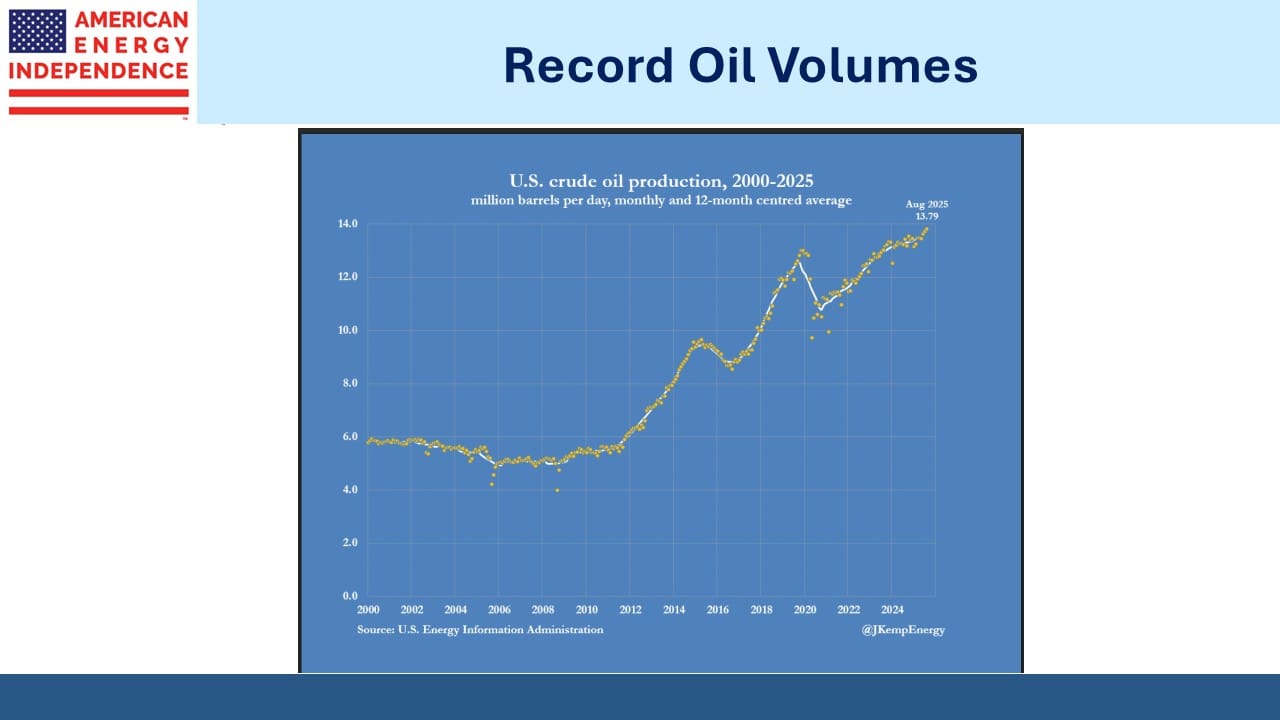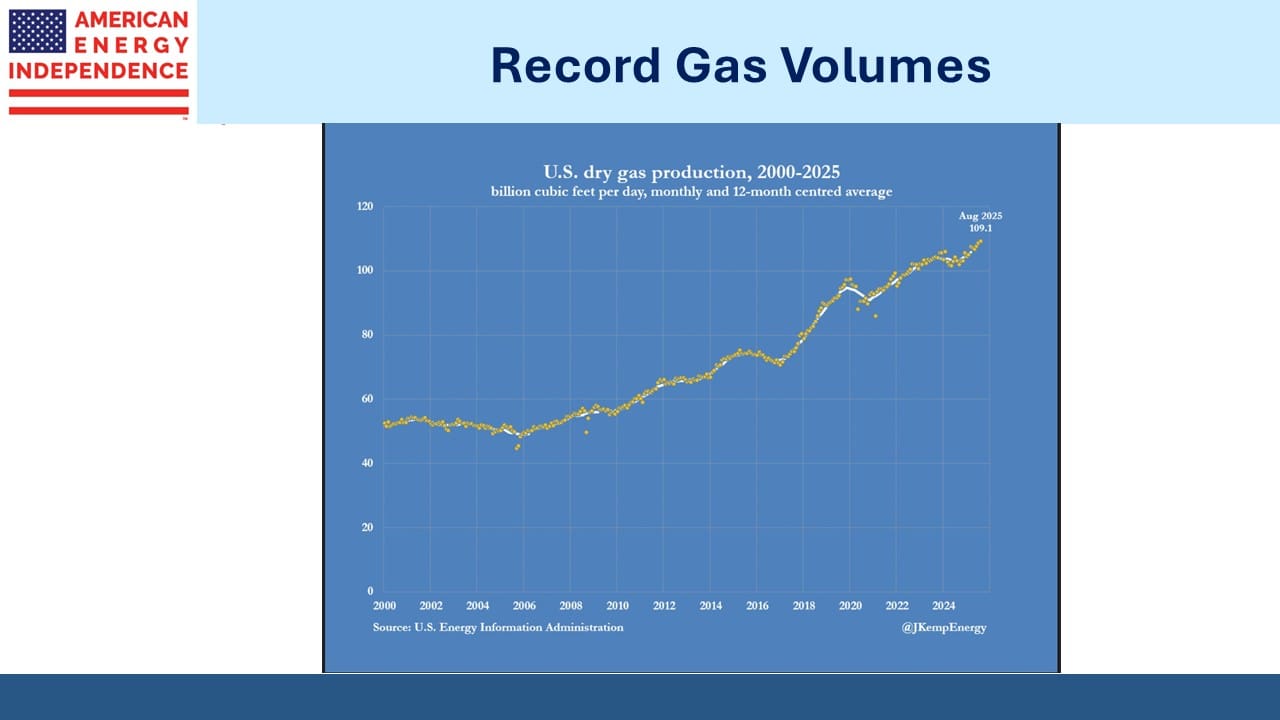MLP Yields Look Better Than Cash

Photo by Martin Adams on Unsplash
This blogger is routinely critical of the Alerian MLP ETF (AMLP) — for good reason, as its narrow universe and tax-paying structure offer ample points of weakness. They’ve even struggled to calculate taxes owed, which resulted in two downward NAV adjustments in 2022-23.
At times I’ve even been critical of MLPs, wondering if the tax deferral on distributions adequately compensates for the complexity of a tax return with multiple K-1s. I’ve suggested that few MLP holders can even state with confidence how much that tax deferral saves them. At such times, my good friend and tax expert Elliot Miller intervenes, usually through a comment on this blog, to assure that MLPs are truly worth the trouble.
But only those with a pathological aversion to reliable income can ignore the MLP yields on offer today. Midstream earnings for both MLPs and corporations have as usual offered few surprises while generally confirming the positive outlook. As this blog noted recently, if these companies were private, we’d conclude that operating performance was satisfactory and that would be the end of the matter.
However, public market prices have been interposing a lugubrious overlay on an otherwise agreeable situation. MLP yields are approaching levels that demand justification for holding cash, where returns remain adequate, but perhaps not for much longer.
Let's start with Energy Transfer (ET), yielding 8.1% and with a Distributable Cash Flow (DCF) yield twice as high. Some mutter about Kelcy Warren putting his own interests ahead of unitholders, as he did nine years ago.
Although Energy Transfer won the subsequent Delaware lawsuit, the stock’s persistent cheapness since then shows that their reputation as fiduciaries has not been restored. Nonetheless, 2016 is a long time ago. Today, Energy Transfer is led by co-CEOs who regularly demonstrate their skill at running the business.
MPLX LP reported earnings that were in-line. Its payout is up 12.5% year-on-year, yields 8.5%, and has a 2026 DCF yield of 11.5%. They raised their full year guidance.
Hess Midstream’s payout is +10.3% year-on-year and yields 9%. Enterprise Products Partners’ payout is +4% year-on-year and yields 7.4%.
It’s not just the MLPs that have attractive yields, however. Pipeline corporations do as well. Oneok yields 6.6%, and it has raised its payout 4.4% over the past year. Kinder Morgan, a persistently poor allocator of capital but well positioned for the needs of data centers for gas-generated power, yields 4.6%.
Cheniere spent $1 billion repurchasing stock during Q3'25 and a further $300 million in October.
(Click on image to enlarge)
The reason operating performance is good for midstream companies is because volumes are growing. Both oil and gas production hit new records this year, with 13.8 Million Barrels per Day of crude output and 109 Billion Cubic Feet per Day of gas output, as of August. Once the indefensible government shutdown is over, we’ll get more recent data.
In brief, this is a good environment for midstream companies.
(Click on image to enlarge)
However, the consequent pressure on oil prices has weighed on energy sentiment. By contrast, US gas prices are already so low that the increased production has not hurt. Moreover, it’s come in time to provide more feedstock to our growing LNG export capacity.
Global crude prices drive sentiment more than regional gas prices. Oil-focused Oneok is –34% year-to-date. The synergies from their acquisition of Magellan Midstream look likely to reach $700 million, which is pretty good for a merger few analysts, us included, were happy about. Weak oil is making energy investors miserable.
The knock-on effect on midstream is at odds with their operating results. If anything, increased volumes should be creating investor enthusiasm. That it’s not is creating an opportunity for those looking beyond the next hot AI trade.
Cash provides the option to do something when prices are attractive. Your blogger’s investments are overweight towards pipelines and T-bills with very little else. But the case for less cash and more dividend-paying securities is gaining strength as the Fed does Trump’s bidding by reducing short-term rates.
The futures market is priced for a 3% Fed Funds rate in a year’s time. The need for investment income will be no less urgent by then. Buying these high yielding securities now means, in our opinion, that you’ll beat the rush that is assuredly coming in the months ahead.
It’s happened before. The Fed’s rock-bottom rates coming out of the pandemic were a cause of inflows into midstream. Compelling valuations helped. Several years of strong returns followed. Many of our investors were initially drawn to midstream because of the stable income. The market is setting up for a repeat performance.
We have two have funds that seek to profit from this environment:
More By This Author:
Debt Monetization And PipelinesInflation Protection From Pipelines
Bullish News On Gas
Disclosure: The information provided is for informational purposes only and investors should determine for themselves whether a particular service, security or product is suitable for their ...
more




